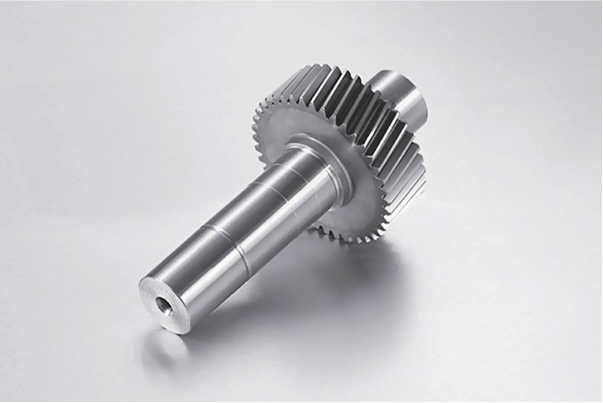The fit between gear shaft and hole varies depending on different application scenarios and design requirements. There are mainly the following cases:
1. Interference Fit
- When it is necessary to ensure high concentricity between the gear and the shaft, as well as reliable torque transmission, tight or interference fits are often used.
- For example, in heavy load, high-speed, or precision transmission systems, there is interference between the gear shaft and the hole, and assembly may require the use of a press or the principle of thermal expansion and contraction. This can prevent sliding between the gear and the shaft due to centrifugal force, vibration, and other factors during operation, thereby improving transmission efficiency and service life.
2. Transition Fit
- Transition fits are used for precise positioning and allow for a certain degree of disassembly.
- For example, the fit between rolling bearings and shafts often adopts a transition fit to ensure good coaxiality and ease of disassembly.
3. Clearance Fit
- For situations where large torque transmission is not required or only flexible rotation is needed, a clearance fit may be chosen, allowing for a certain gap between the shaft and the hole for easy installation and disassembly.
- However, this type of fit is not suitable for applications requiring heavy loads or high precision transmission.
Clearance fit refers to the presence of a certain gap between the shaft and the hole, typically with IT11~IT13 grade tolerances. Typical applications include the fitting of shafts and bearings, and the fitting of shafts and gears.
Interference fit refers to the relationship between the dimensions of the shaft and the hole where the shaft is smaller than the hole, typically with IT6~IT10 grade tolerances. Typical applications include the fitting of shafts and gears, and the fitting of shafts and couplings.
Transition fit refers to the relationship between the dimensions of the shaft and the hole where the tolerance zones of the shaft and the hole overlap, typically with IT7~IT9 grade tolerances. Typical applications include the fitting of machine tool spindles and rolling guides.
In mechanical design, the fit between gear shaft and hole is crucial as it directly affects the positioning accuracy of the gear, transmission efficiency, and the overall stability and reliability of the mechanical system. Based on past experience, the fit between gear shaft and hole mainly falls into three types: clearance fit, transition fit, and interference fit. The specific choice of fit depends on the actual usage conditions and requirements.
Clearance Fit
Clearance fit refers to the fit where the size of the hole is larger than the size of the mating shaft, resulting in a positive difference between the two dimensions. In this type of fit, the tolerance zone of the hole is positioned above that of the shaft, creating a fit with clearance. Clearance fit is suitable for situations requiring a certain amount of clearance to ensure flexible rotation or easy assembly. For example, when a gear needs to rotate freely on a shaft or requires frequent disassembly for maintenance, clearance fit can be used.
Transition Fit
Transition fit refers to the fit where the tolerance zones of the hole and the shaft overlap, allowing for either clearance or interference fit depending on which pair of hole and shaft is selected. Transition fit may involve both clearance and interference fits during actual assembly, and the fit type can only be determined during assembly after the parts have been machined. Transition fit is suitable for applications requiring high positioning accuracy but allowing for some assembly error.
Interference Fit
Interference fit refers to the fit where the size of the hole is smaller than the size of the mating shaft, resulting in a negative difference between the two dimensions. In this type of fit, the size of the shaft is larger than that of the hole, requiring the shaft to be pressed into the hole with a certain amount of force to achieve a tight fit. Interference fit is suitable for situations requiring very high positioning accuracy and connection strength, such as heavy loads, high speeds, or impact loads.
When selecting the fit between gear shaft and hole, the following factors need to be considered:
- Magnitude of power transmission: Higher power transmission typically requires a tighter fit to ensure effective torque transmission.
- Smoothness and impact of loads: Clearance fit can be used for smooth loads, while impact loads may require interference fit to improve connection stability.
- Assembly process: Consider the ease and cost of assembly when selecting the appropriate fit.
In summary, the fit between gear shaft and hole needs to be comprehensively considered based on specific working conditions, design requirements, and assembly processes to ensure the normal operation and performance of the mechanical system.
Thank you for reading. Looking forward to serving you with our exceptional gear solutions. #BeyondGears


